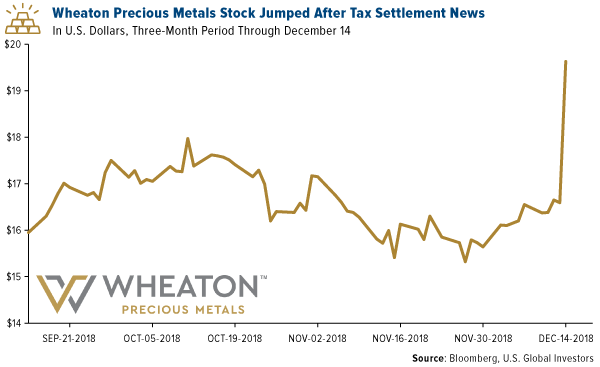At the start of 2018, I warned about two significant forms of disruption that posed risks to markets: geopolitical disruption and monetary policy disruption. The solution to the global financial crisis – experimental monetary policy – had created greater wealth inequality, which had led to geopolitical disruption, and the situation was poised to worsen in 2018. This experimental monetary policy, especially large-scale asset purchases, was beginning to be unwound – and that was an experiment in and of itself which also had the potential to cause disruption.
Now, in the waning days of 2018, disruption – both geopolitical and monetary policy – is refusing to take a holiday. A roundup of headlines from around the globe illustrates the challenges that will follow markets into the new year – and the U.S. Federal Reserve (Fed) promises to add to those headlines with its meeting this week.
Disappointing data from China. More signs of a global slowdown appeared on Friday as November retail sales in China grew at their slowest pace in over a decade.1 Chinese car sales were particularly disappointing. In addition, industrial production fell to 5.4% year over year in November, from 5.9% year over year in October.1 Asian markets fell on the news, which spilled over into a global sell-off.
Minor concessions in the trade war, but fears remain. China’s finance ministry announced Friday it would suspend additional tariffs on U.S.-made vehicles and auto parts for three months starting Jan. 1, 2019, following an announced truce in the trade war. The Central Economic Work Conference is being held this week and is likely to provide some insight into how China intends to stimulate its domestic economy in the face of this slowdown, as well as how it intends to handle the trade conflict with the U.S. going forward. I expect no major trade concessions, even if speeches from government officials sound conciliatory, as I still do not see any real incentive for China to make such concessions. And so I expect concerns to persist that the trade conflict could easily escalate.
Pressure in the U.S. credit market. There are also concerns being raised about the U.S. credit market. The Financial Times, citing data from Informa and Dealogic, recently reported that there have been no high-yield bond issues so far this month.2 And high-yield bond yields have risen significantly in the past several months, indicating concerns about risks there. There has also been a drop in interest in the leveraged loan market, with two deals set to go to market last week being postponed.
The Brexit plot thickens. UK Prime Minister Theresa May survived a “no confidence” vote last week, but by a slimmer margin than expected. She worked frantically to convince the European Union (EU) to make concessions to the Brexit agreement in the hopes that Parliament would pass the deal if it had better terms for the UK, particularly around the Irish Backstop provisions. Not surprisingly, the EU made no concessions, which means that May’s options are diminishing as the March 2019 Brexit date draws closer. Despite increasing political pressure to hold a referendum vote, she continues to resist. This will put increasing pressure on the UK economy, as economic policy uncertainty places downward pressure on capital spending and hiring.
U.S. angst. In the U.S., there is the potential for a partial U.S. government shutdown looming later this week, as President Donald Trump’s administration and Congress continue to clash over funding for Trump’s proposed border wall between the U.S. and Mexico. In addition, the the US-Mexico-Canada (USMCA) trade agreement remains in some danger of not being passed, as there is union pressure being exerted on a number of Democratic congresspeople. I expect a drop in the Mexican peso as we hear more noise about this.
Cracks in the European Union. In addition, the “yellow vests” are still protesting in France, posing a real challenge to President Emmanuel Macron’s leadership. This is particularly concerning for the entire region – as Angela Merkel’s domestic power has waned in Germany, Macron has assumed the mantle as the de facto leader of the European Union. If his administration were to be toppled, it would place leadership of the EU into disarray, since Germany and France have been the EU’s greatest advocates in the face of dissension from other countries.
Coincidentally, Jan. 1 will mark the 20th anniversary of the euro. Some never expected the euro to make it to 20 years old, but indeed it has – and I would argue that Europe survived the global financial crisis and subsequent crises because of the existence of the European Central Bank (ECB). In fact, speaking in Italy over the weekend, ECB President Mario Draghi recounted the many benefits of the euro in the face of recent criticism from Italian populists and French “yellow vests,” while recognizing that quantitative easing (QE) was a very imperfect solution to the crisis and resulted in income inequality, which has in turn led to the rise of nationalism. Draghi argued that economic underperformance of some countries in the EU could not be blamed on the euro. Draghi then took the time to sound an ominous alarm on nationalism and its assault on the EU: “The fascination with illiberal prescriptions and regimes is spreading; we are seeing little steps back in history.”
Central banks to the rescue?
Amidst all this geopolitical turmoil, investors also have to worry about the withdrawal of central bank support, which would only amplify volatility.
Last week, the ECB met and decided to end its QE program. However, Draghi was able to present an outlook that was quite dovish and didn’t upset markets. And I do believe he stands ready to step in if needed and re-ignite the ECB’s QE program or utilize other tools such as long-term loans to commercial banks. Draghi has managed to keep down systemic stress through just his words in the past, and I don’t see this changing in the remaining months of his term.
Looking ahead, there will be several major central bank meetings this week. The Bank of Japan will meet and is of course expected to remain very accommodative. I believe it’s no coincidence that the recent Tankan Survey, which is a reading of business confidence in Japan, shows greater optimism in sentiment. There’s something about a “central bank put” that really instills confidence in businesses.
The hat trick will be whether the Fed, which meets this week, will be able to accomplish the same feat as the ECB, especially given greater skepticism of Fed Chair Jay Powell (after all, the Fed has been responsible for much of the pressure on stocks this fall). I agree with the consensus view that the Fed will raise rates this week; however, it must be able to take a forward-looking tone that is more dovish in order to prevent more downward pressure on stocks. That means we need to see a dot plot that no longer indicates a policy prescription of three rate hikes for next year – and I think that will be the case. I expect we will see a policy prescription of two rate hikes for next year – and that is likely to be revised down in a subsequent dot plot.
We will also need to see an adjustment in the Federal Open Market Committee (FOMC) statement language to suggest a higher hurdle for future rate hikes. Now if the Fed wanted to change market sentiment significantly and cause a real “Santa Claus rally,” it could do one of two things: 1) only raise rates 12.5 basis points in December (this was an idea reportedly promoted by former Vice Chair Stanley Fischer several years ago when the Fed was beginning the normalization process); or 2) announce a dialing down of balance sheet normalization, which has clearly been disruptive. Neither one of these options is at all likely, but is worth mentioning in the off chance the FOMC attempts to become more creative as it works to normalize without disrupting. It is an understatement to say that all eyes are on the Fed this week, as investors look to it to throw them a life preserver.
Of note
Disruption may not take a holiday, but I will. Please be on the lookout for my next blog post Jan. 7. Happy Holidays to you and yours.
This post was originally published at Invesco Canada Blog
Copyright © Invesco Canada Blog
















